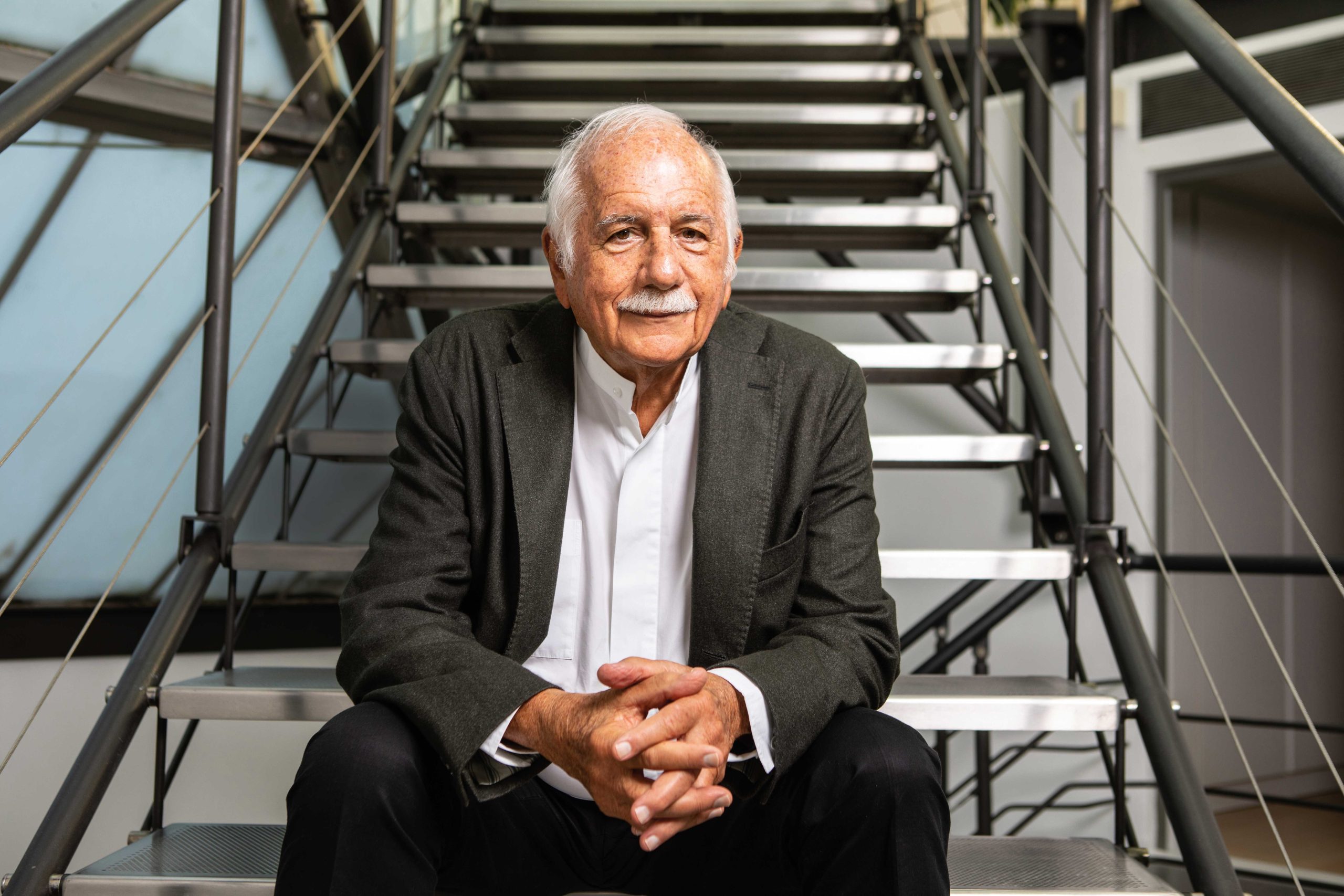Lifestyle
Moshe Safdie Discusses Architecture’s Role in Community Design

Renowned architect Moshe Safdie recently shared insights on how architecture can foster community and address societal divisions, particularly through his experiences with projects in Israel and beyond. Safdie, who first gained international acclaim for his design of Habitat 67 in Montreal, has continued to influence urban landscapes with notable works such as the National Gallery of Canada in Ottawa and Marina Bay Sands in Singapore.
In a candid interview, Safdie reflected on the complexities of designing spaces that bridge cultural divides, particularly in the Mamilla district of Jerusalem, which he envisioned in the early 1970s. This area has evolved into a vibrant shopping district, serving as a connection between the old and new parts of the city, as well as between Jewish and Palestinian communities. Safdie emphasized that while architects can create environments conducive to collaboration and interaction, they are not the sole agents of societal change.
“Architects can create the physical setting to improve cohabitation, collaboration, interaction,” he noted. “But that can only be done via an opportunity that has to be enacted by policy.” He cited the example of Singapore, where government policies have intentionally mixed various racial communities within new towns to prevent social unrest.
Safdie believes that the Mamilla district has largely fulfilled its intended purpose, creating a lively public space that attracts diverse groups. He described it as a “powerful link” that draws together Orthodox Jews, secular residents, tourists, and Arabs, fostering an environment where different cultures coexist.
During the conversation, Safdie addressed the challenges faced by Jewish architecture, particularly in creating synagogues that resonate with community identity and aesthetics. He referenced Jewish theologian Michael Wyschogrod, who critiqued the lack of distinctive taste within the Jewish community, suggesting that this could lead to a “bourgeois Judaism” devoid of spiritual vitality. Safdie acknowledged this sentiment, lamenting the absence of significant synagogue architecture in recent decades, aside from a few exceptions like the Skirball Cultural Center in Los Angeles.
The architect expressed concern over the aesthetics and functionality of religious spaces, citing a project he worked on for former chief rabbi of Israel, Rav Goren. His restoration efforts were marred by later alterations that compromised the building’s integrity and beauty, highlighting a broader issue of neglect in the preservation of historical and cultural sites within the Jewish Quarter of Jerusalem.
Safdie urged for a greater appreciation of architecture and design in educational settings, particularly in Jewish schools. He noted the potential of young minds to engage with visual arts, citing the success of influential Jewish architects like Frank Gehry and Richard Meier as evidence of untapped talent within the community.
Reflecting on his earlier work, Safdie likened Habitat 67 to an urban kibbutz, describing how it has evolved into a communal living space over the years. He explained that the relationship between a client and architect is fundamental to the success of any project, emphasizing the importance of dialogue in achieving meaningful design outcomes.
“Good architecture comes out of that dialogue,” he said, noting that understanding the site’s climate, culture, and community lifestyle is essential in creating spaces that foster a sense of belonging.
Safdie also discussed the critical elements of synagogue architecture, emphasizing the role of light as a spiritual conduit. He drew parallels between the structure of sacred spaces and the experience of light in significant buildings, such as Notre-Dame in Paris, which has recently undergone refurbishment.
As he approaches his 87th birthday, Safdie reflects on a long career filled with achievements and lessons. “There’s a certain level of security and self-appreciation about what you’ve achieved,” he said, noting a shift in perspective over the years.
Through this interview, Safdie’s vision of architecture as a powerful tool for community building and cultural expression becomes clear. His work continues to inspire architects and communities alike, shaping the way people interact with their environments.
-

 Science3 months ago
Science3 months agoToyoake City Proposes Daily Two-Hour Smartphone Use Limit
-

 Top Stories3 months ago
Top Stories3 months agoPedestrian Fatally Injured in Esquimalt Collision on August 14
-

 Health3 months ago
Health3 months agoB.C. Review Reveals Urgent Need for Rare-Disease Drug Reforms
-

 Technology3 months ago
Technology3 months agoDark Adventure Game “Bye Sweet Carole” Set for October Release
-

 World3 months ago
World3 months agoJimmy Lai’s Defense Challenges Charges Under National Security Law
-

 Lifestyle3 months ago
Lifestyle3 months agoVictoria’s Pop-Up Shop Shines Light on B.C.’s Wolf Cull
-

 Technology3 months ago
Technology3 months agoKonami Revives Iconic Metal Gear Solid Delta Ahead of Release
-

 Technology3 months ago
Technology3 months agoApple Expands Self-Service Repair Program to Canada
-

 Technology3 months ago
Technology3 months agoSnapmaker U1 Color 3D Printer Redefines Speed and Sustainability
-

 Technology3 months ago
Technology3 months agoAION Folding Knife: Redefining EDC Design with Premium Materials
-

 Technology3 months ago
Technology3 months agoSolve Today’s Wordle Challenge: Hints and Answer for August 19
-

 Business3 months ago
Business3 months agoGordon Murray Automotive Unveils S1 LM and Le Mans GTR at Monterey









